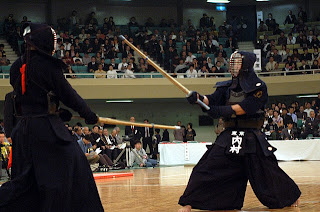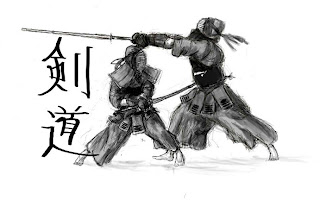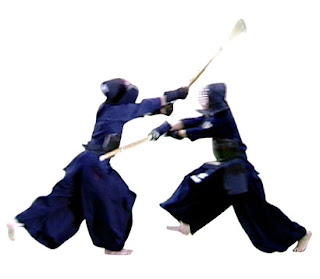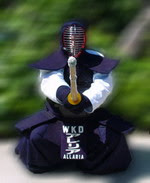Kendo originated from ken kanji (?; Sword) and dou (?; Street), which means the ancient Japanese art of swordsmanship. This martial art developed from kenjutsu or sword using traditional techniques. Today kendo is not only regarded as a martial art but has become a sport that competed. Kendo is taught in Japanese schools as an extracurricular. People learn kendo is kendoka or kenshi. Kendo is often equated with fencing but that sets it apart is how to hold and type of sword. Fencers use one hand to hold the sword fencing, kendo while using both hands to hold the wooden sword. Kendo uses a lot of equipment or body armor known as kendo bougu. There are four types of protective equipment used, namely a download [mask / face mask and protective headgear], a do [chest protector], two kote [protective hand and forearm], and a Tare [protective waist]. While the wooden sword used is shinai. Shinai are generally made of bamboo with a length ranging from 118cm.
history of kendo
Kendo began to grow in Japan since the days of the samurai and during the Kamakura period [1185-1233], where his sword and retaining a major martial arts equipment in the military. In those days Nawah kendo developed in the Buddhist influence. Then the kendo training school was established by experts including swords, Ryuu Itto college, Muto, and Munen Muso Ryuu. At the Shotoku era [1711 - 1715] Naganuma Shirozaemon Kunisato founded a school kendo-Shinkage Jiki Ryuu who teaches kendo with shinai and kendo bougu. The technique was later known as modern kendo.
Depth
Kendo has a degree level that indicates a person's ability to play kendo. The system used to measure those levels are and and Kyuu. Level and starting from 1-and [sho-and] up to 10-and [Bure-and]. Below that level and no Kyuu level consisting of 6 levels.
Kendo Competition
Kendo competitions held in an indoor space with a field size of 9X11 meters per one game. Diasanya field side line demarcated by white tape. In kendo match, kendoka will be given 1 point [called ippon] when attacking targets precisely with the movement of ki-ken-tai-ichi [unity of spirit, the sword, the body]. One thing to note is the movement zanshin, a guard position for and when to attack. In kendo there are violations that should be avoided during the tournament that is, kendoka should not be out of bounds line, dropping the kendo shinai or other equipment, grip shinai touches more than the limit. If it is violated his opponent would get ippon. Kendo match shinpan observed by three people [the referee] who each hold a red and white flag in his hands. The referee will raise one of the flags by color ribbon worn by the giver. Points will be given at least two referees who agree. The game is finished if there is one that gets kendoka points. To win the game takes 2 points, a draw if there are several possibilities. First, the match is considered a draw. The second, held encho or extension of the game. Kendo was restless; ang globe not only in Japan alone. In 1970 the International Kendo Federation was formed [FIK] and since then the international kendo matches are held every 3 years. Until the end of tahun2005 noted that there are 44 countries that make up the kendo federation, ranging from the continent of Asia, Europe, America to Africa, Indonesia was also one of 13 countries in Asia that memuliki Kendo Federation.







{ 0 comments... read them below or add one }
Post a Comment